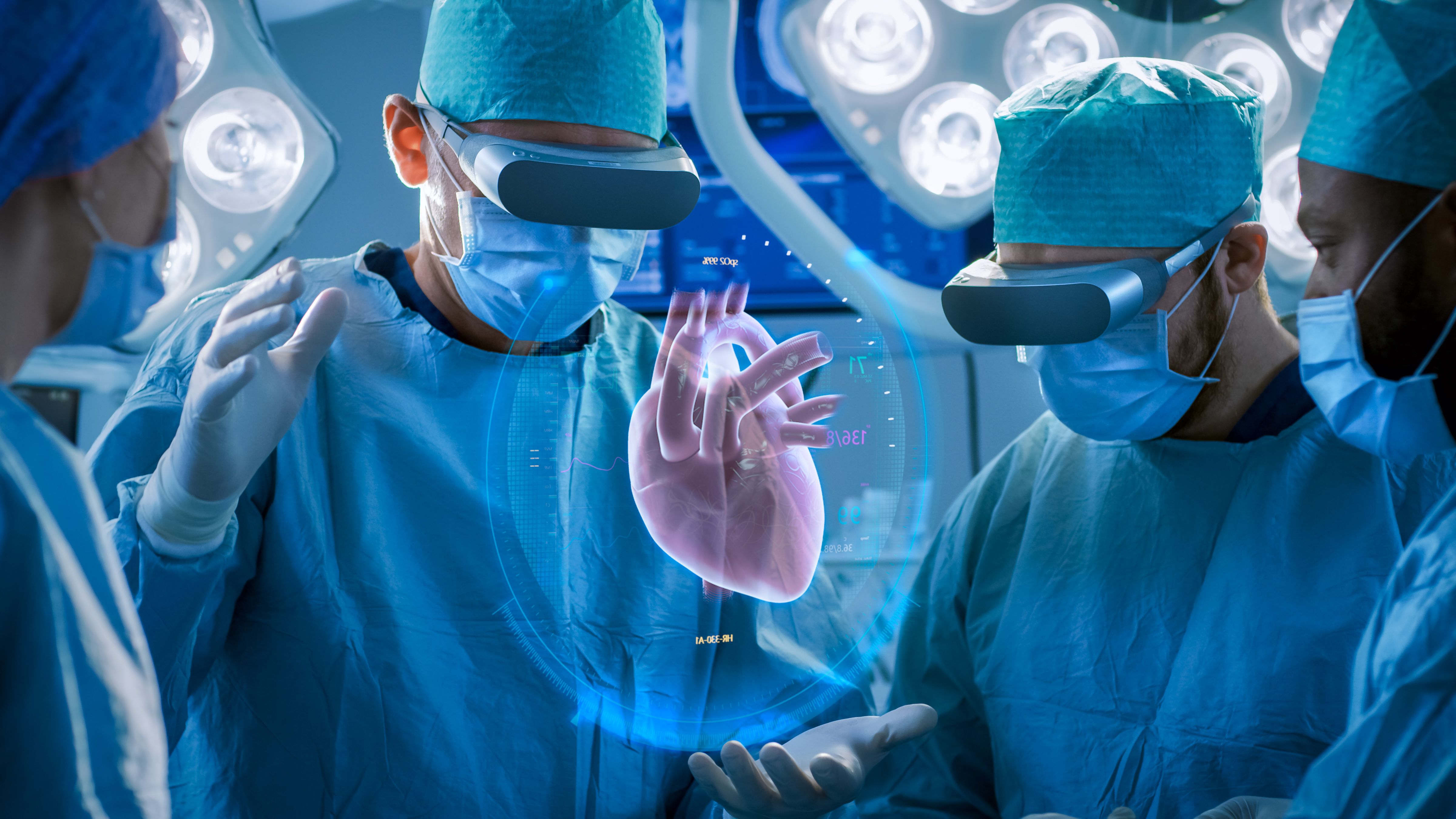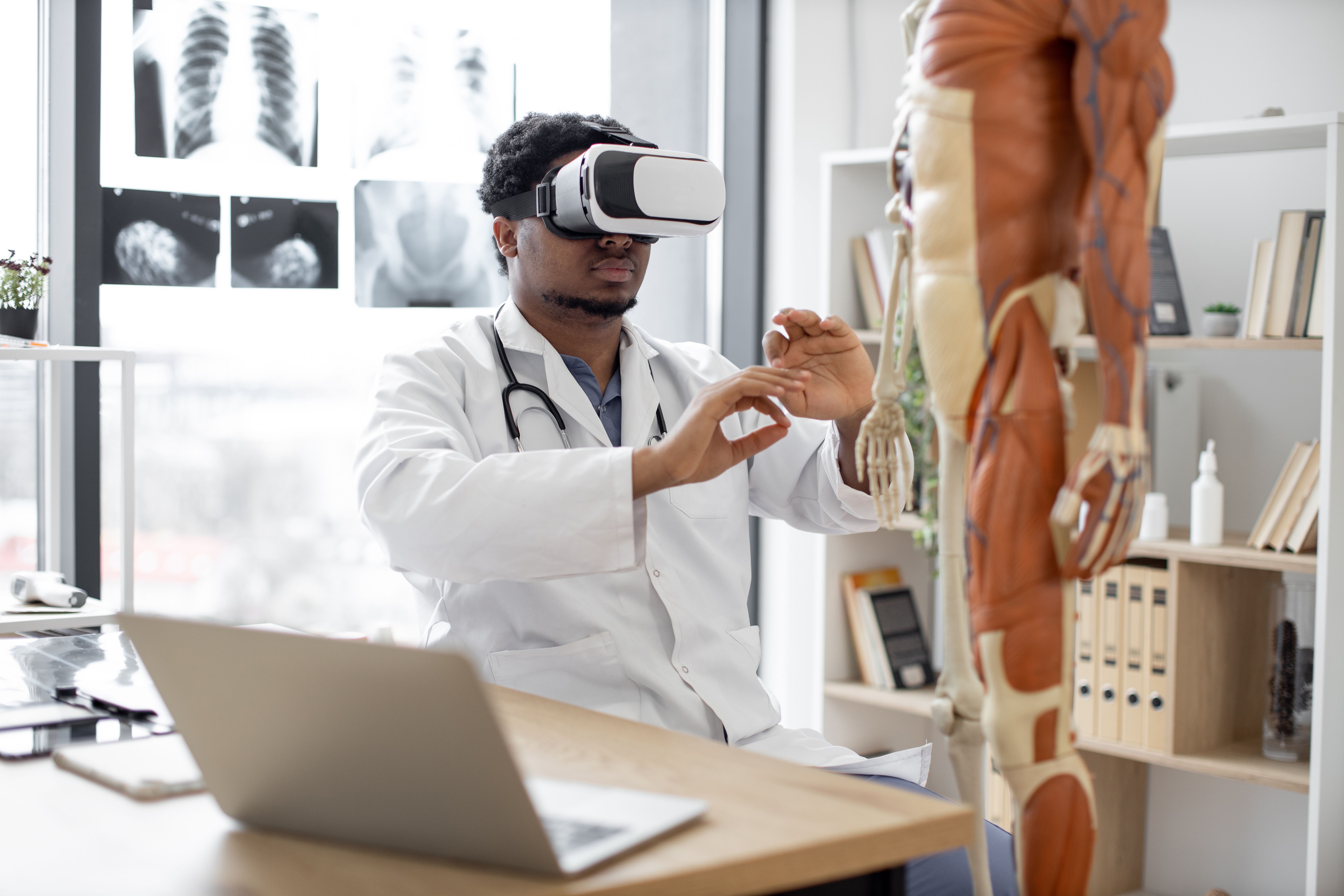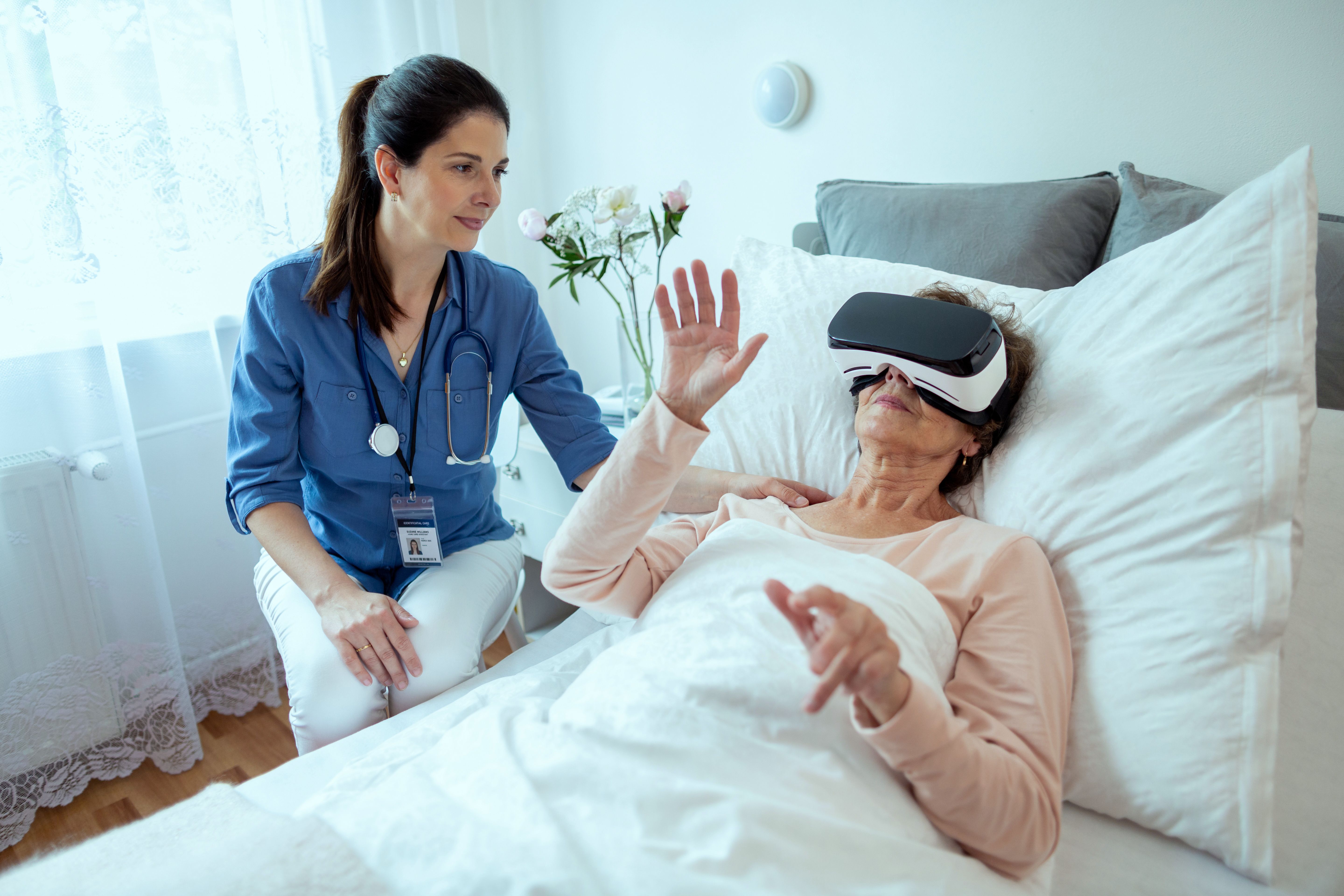Can one become proficient in complex medical procedures without jeopardizing patient safety? Virtual reality technologies have become effective tools for training doctors and medical students through immersive learning programs that ensure patients’ safety. For example, VR learning programs can help medical graduates and undergraduates access simulated surgeries in realistic 3D environments, providing them with hands-on experiences that would be difficult or impossible to replicate safely otherwise. In this blog post, we’ll take a look at how VR is being deployed in medical classrooms and hospitals and explore its potential impact on healthcare education.
VR for Immersive Medical Treatment
Like in other industries, VR transforms instruction in medical schools and faculties. Thanks to virtual reality, health professionals and students can take advantage of realistic environments to refine their skills and practice procedures on patients without putting them at risk.
In addition to mitigating risks, VR can facilitate various facets of medical education for aspiring physicians. For instance, virtual reality can:
● Improve medical students' empathy toward patients. ● Teach them to comprehend various contexts and perspectives associated with a specific medical procedure. ● Medical education becomes financially inclusive, as tuition and other associated costs of traditional teaching are unnecessary expenditures.
Today, immersive education programs for medical training are increasingly accessible, innovative, and effective. For this reason, they’re often the preferred choice for medical institutions and faculties seeking more efficient and cost-effective modes of instruction.
What is the Role of VR in Enhancing Medical Education
VR has significantly impacted medical education, particularly in enhancing learning processes for medical students and new doctors.
The crucial role played by virtual reality in immersive learning for medics makes it an area worth exploring. Would you like to learn more?
Here are some of the contributions of virtual reality technologies to improving medical education:
● Immersive learning: VR has the power to create engaging learning experiences for medical learners that mimic real-life scenarios. With this approach, knowledge retention and understanding of complex medical concepts can be enhanced.
● Customizable training: VR learning programs in medicine can be tailored to student's individual needs and preferences. How can this benefit learners? Since students have more flexibility and autonomy, they can learn at their own pace and focus on their interests.
● Collaboration and teamwork: Virtual reality fosters collaboration among medical students and professors, allowing them to share their points of view and work together to improve patients' lives.
● Access to expertise: Virtual reality allows students to establish contact with medical experts globally. Global connectivity provides learners with specialized knowledge, resources that might not be available locally, and the best possible education and training.
● Continuous learning: VR medical training programs enable aspiring doctors to learn new procedures, sharpen their skills, or acquire new ones.
VR technologies pave the way for better medical education programs, leading to better patient care.
Benefits of Immersive Learning for Medical Training
Advantages of Immersive Learning for Medical Students
Immersive teaching programs offer medical students numerous benefits. These include applying their knowledge in realistic risk-free scenarios and developing important soft skills such as empathy, collaboration, and teamwork.
However, there are more advantages. Here we mention some of them:
● Immersive VR learning programs for medical training make the educational process more comfortable for students. They instill a valuable understanding that making mistakes is part of the process.
● These programs can supplement traditional classroom instruction to provide learners with a more comprehensive understanding of medical practices.
Advantages of Immersive Learning for Medical Educators
Medical immersive programs have a unique advantage: gathering and analyzing students' learning process data to help educators optimize their teaching strategies and improve learning outcomes.
Additionally, these VR programs can help instructors:
● Ensure learners are receiving accurate information and standardized training
● Track learners' progress and identify areas where additional instruction may be needed
● Better prepare students for practicing medicine upon graduation
Challenges of Using VR for Medical Training
Using VR for immersive medical training offers numerous benefits for learners and educators alike. Despite benefits, the implementation of VR in these programs can be challenging.
Knowing the challenges associated with introducing VR in medical training can better prepare you to face them. Let's explore these challenges below.
High Costs
To effectively use immersive technologies in education, medical institutions, and faculties should consider the costs of VR hardware, software, content development, equipment maintenance, and staff requirements.
Technical issues
Achieving compatibility between VR software and hardware components can be daunting. This leaves institutions struggling to seamlessly integrate VR technologies with their existing IT infrastructure.
Limited Content Available
High-quality and medically accurate virtual reality content is scarce. This makes VR medical training ideal for supplementing traditional university instruction sometimes.
Adoption and Resistance to Change
Introducing new technologies like VR for medical training may face resistance from faculty. To mitigate this, educators should address concerns and emphasize the benefits of this modern approach to medical education, especially for students who prefer traditional learning.
Motion Sickness and Discomfort
Some users may experience VR utilization differently. Motion sickness or discomfort can create barriers to the long-term use of VR headsets, affecting the learning experience.
Data Privacy and Security
The use of VR in medical education often involves collecting and storing sensitive data. Medical schools and instructors need to take measures to protect data and comply with relevant privacy regulations.
Evaluation
Traditional assessment methods may not be suitable for evaluating performance in VR-based learning experiences. Educators will need to develop new ways to assess and measure student progress in virtual environments.
How to Introduce VR in Immersive Learning for Medical Training
Strategic planning for implementing virtual reality in immersive medical training courses maximizes its benefits and allows you to overcome associated challenges. Here are some steps to successfully integrate VR into medical training.
Identify Objectives
As an educator or medical school staff, it's worth asking why VR should be a part of your learning programs.
Do you want to enhance learners' diagnostic abilities or improve their surgical skills? Would you like to facilitate better communication with patients? Consider the possibilities and how VR can improve your training activities.
Research Available Solutions
Explore the various VR hardware and software solutions available in the market. When selecting the best solution for your medical training program, you may want to consider factors like compatibility, usability, and scalability.
Create a Budget
When considering implementing VR technology, estimate the costs derived from hardware and software acquisition, content development, and staff training. You can ensure that adequate funds are allocated to support your immersive learning program for medical graduates and undergraduates.
Collaborate with Experts
You can partner with industry experts, VR developers, and other medical professionals experienced in immersive technologies for training to make your medical program cost-effective for your institutions and learners.
Train Educators and Staff
To provide students with more engaging and immersive learning experiences, organizations can equip their staff with the skills to utilize virtual reality and other immersive technologies.
Additionally, by incorporating these technologies into their teaching methodologies, institutions can stay on the cutting edge of educational practices and more effectively prepare their students for success in a rapidly evolving job market.
Integrate VR into the Curriculum
VR components can be included alongside traditional teaching methods to enhance the medical curriculum. Remember to ensure alignment with learning objectives to maximize educational experiences.
Takeaway
Virtual reality technology has immense potential to revolutionize medical training. It provides significant advantages for educators and learners alike. By offering an immersive and interactive experience, students can gain valuable insights through hands-on practice.
While cost considerations and technological issues pose challenges, Vection Technologies can provide innovative virtual reality solutions for your medical teaching needs. Contact us today to learn more!



